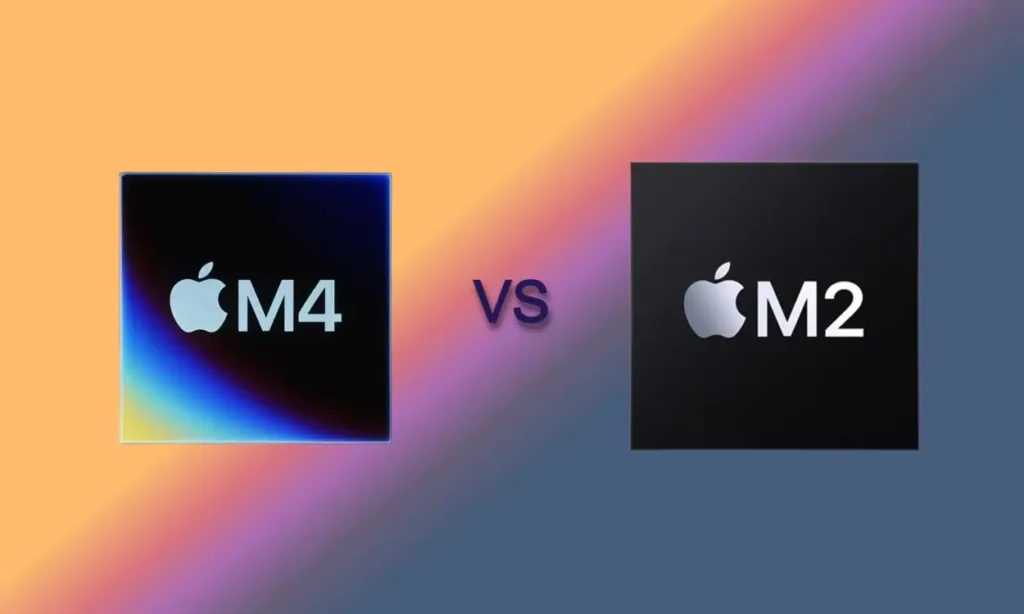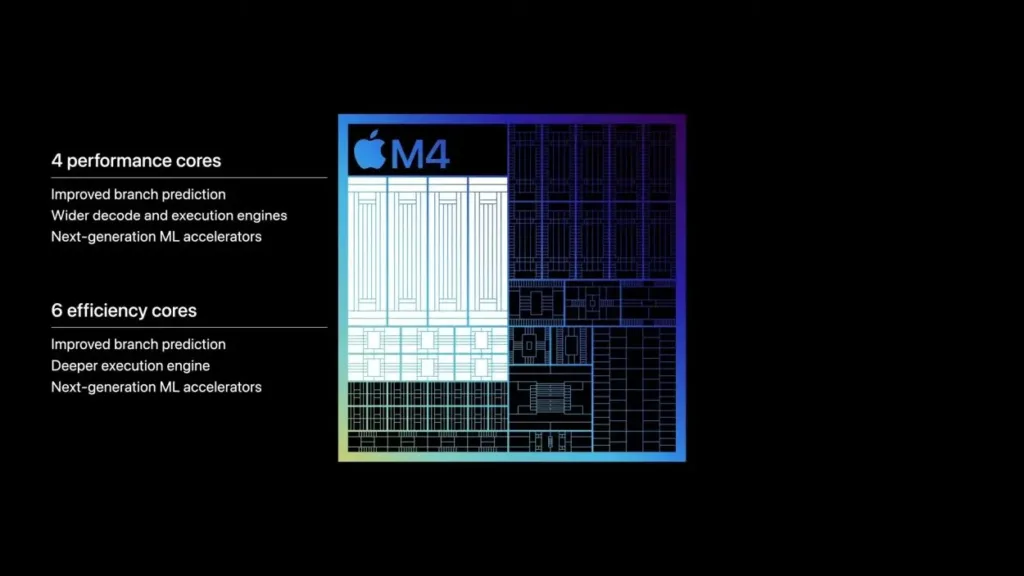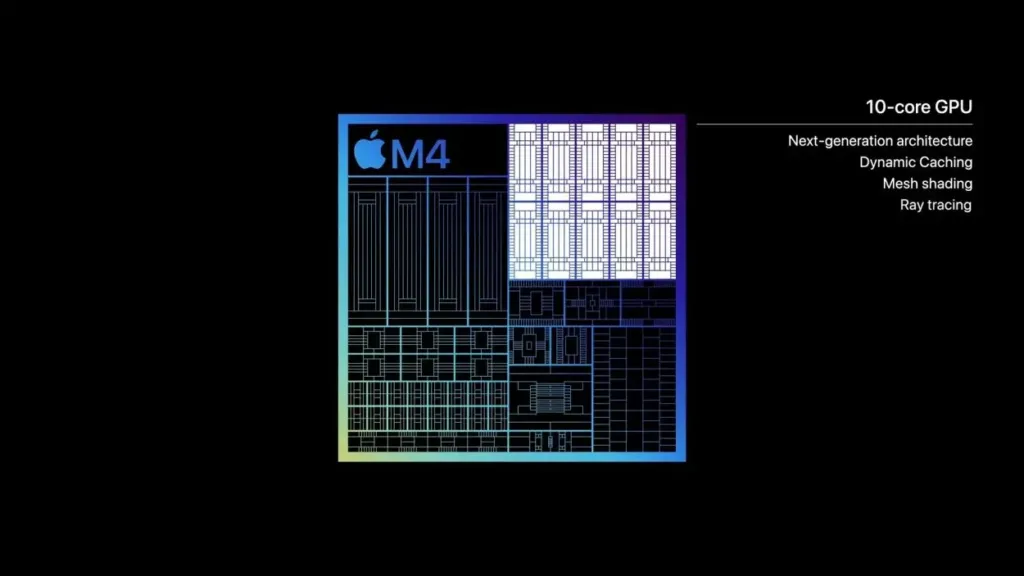
Apple has unveiled its new family of Apple Silicon chipsets at the “Let Loose” event, including the introduction of the Apple M4 with the new OLED iPad Pro. The iPad Pro lineup has made a direct leap from the Apple M2 to the Apple M4. In this article, we compare the Apple M4 and M2 to evaluate their performance differences in CPU, GPU, and Neural Engine capabilities. We also discuss memory bandwidth and other AI-related improvements on the M4. Let’s dive in.
Apple M4 vs M2: Specifications Comparison
Here is a comparison of the specifications between the Apple M4 and M2 chipsets. Take a glance to understand the differences between the two.

Apple M4 vs M2: CPU
Starting with the CPU, the Apple M4 is built on TSMC’s 2nd-gen 3nm process node, known for its efficiency. It boasts an impressive 28 billion transistors. The Apple M4 CPU for iPad Pro comes in two configurations: one with 9 CPU cores and another with 10 CPU cores. The first variant offers 3 performance and 6 efficiency cores, while the second variant includes 4 performance and 6 efficiency cores.

Apple has integrated next-gen ML accelerators into the Apple M4 CPU, enhancing its capabilities for AI-related tasks and working in conjunction with the Neural Engine.
In comparison, the Apple M2 CPU is built on TSMC’s 5nm process node and contains nearly 20 billion transistors. It features 8 CPU cores, including 4 performance and 4 efficiency cores. Apple claims that the M4 CPU is up to 50% faster (1.5x) than the M2 CPU.
Apple M4 vs M2: GPU
In terms of GPU performance, Apple has continued to refine its next-generation GPU architecture, first introduced with the M3 chip. The Apple M4 is equipped with 10 GPU cores and supports features like dynamic caching, which enhances the GPU’s efficiency and performance.

The iPad lineup now includes hardware-accelerated Ray Tracing and HW-accelerated Mesh Shading for the first time, thanks to the powerful Apple M4 GPU. Ray Tracing enhances the realism of shadows and reflections in games, creating a more immersive gameplay experience.
Comparatively, the Apple M2 also has 10 GPU cores but lacks these advanced capabilities. According to Apple, the Apple M4 GPU offers up to 4 times better performance than the M2 GPU. Furthermore, in terms of performance-per-watt, the Apple M4 GPU can achieve the peak performance of the M2 GPU while consuming only half the power.
Apple M4 vs M2: Neural Engine
Regarding the Neural Engine, Apple has made significant enhancements to the 16-core Neural Engine on the M4. Despite having the same number of cores, it is much faster and more efficient than the M2 Neural Engine. The M4 Neural Engine can deliver up to 38 trillion operations per second (TOPS), whereas the older M2 Neural Engine can only manage up to 15.8 TOPS.

Leveraging the ML accelerators in the CPU and next-generation GPU, the M4 Neural Engine delivers an unprecedented level of performance. According to Apple, it can run powerful Generative AI and Diffusion models directly on the device.
Apple M4 vs M2: Memory Bandwidth and More
Regarding memory bandwidth, Apple has equipped the Apple M4 with slightly faster memory, capable of delivering speeds up to 120 GBps. This bandwidth remains consistent across both the 8GB and 16GB variants. In comparison, the Apple M2 features LPDDR5 memory offering speeds of up to 100 GBps in the base variant. However, Apple has not disclosed the memory type for the Apple M4 chip.

Additionally, the Media Engine on the Apple M4 introduces hardware-accelerated AV1 decode support, enabling efficient playback of high-resolution videos. However, it still lacks hardware-accelerated AV1 encoding. Both chipsets offer video codec support for ProRes, H.264, and HEVC.
The Verdict
Apple describes the M4 chipset as an “outrageously powerful chip” that surpasses the M2 chipset in speed while consuming less power. Compared to the M2 chip, the Apple M4 represents a significant upgrade, offering 1.5 times better CPU performance, 4 times better GPU performance, 2 times improvement in Neural Engine performance, and slightly faster memory speeds.
However, when compared to the Apple M3, the difference is less pronounced. We are particularly interested in the peak frequency of the M4 chip and its power consumption figures. Once we have the new iPad Pro in hand, we will conduct tests and share benchmark scores from the Apple M4 chip. Stay tuned for updates!

0 Comments